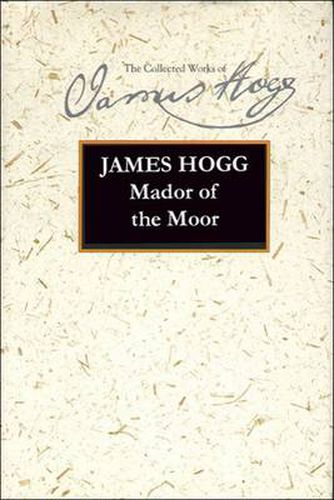Readings Newsletter
Become a Readings Member to make your shopping experience even easier.
Sign in or sign up for free!
You’re not far away from qualifying for FREE standard shipping within Australia
You’ve qualified for FREE standard shipping within Australia
The cart is loading…






Reworking of a traditional tale with a subversive tone Scottish popular tradition includes a group of stories about a King who has adventures - amorous and otherwise - as he wanders in disguise among his people. Many of these stories focus on James V and in Walter Scott’s long narrative poem The Lady of the Lake (1810) the King encounters a mysterious lady while he is wandering alone and unrecognised in the Highlands. At first sight Scott’s heroine seems to be a simple country girl, but she turns out to be a daughter of the great aristocratic house of Douglas, living for the time being in a rural exile. Scott’s romantic and aristocratic version of the old ‘wandering King’ stories was hugely popular in its day, but Hogg subverts and questions this tale in Mador of the Moor (1816). The name ‘Mador’ suggests ‘made o'er’, ‘made over’, and Mador of the Moor is in effect a makeover of The Lady of the Lake. Hogg’s poem, like Scott’s, tells how a deer-hunt in the Highlands leads a disguised King of Scots into a love-adventure with a young woman. However Hogg’s heroine, Ila Moore, is not a chaste aristocrat but a girl of low social standing who is made pregnant by the wandering King. Ila’s inherent resourcefulness and strength of character suggest that a peasant girl pregnant out of wedlock can be a heroine fully worthy of respect, and Mador (rejected as shocking and ridiculous by its original readership), now re-emerges as a flowing and immensely readable narrative that eloquently challenges the deeply-ingrained class and gender prejudices of Hogg’s society.
$9.00 standard shipping within Australia
FREE standard shipping within Australia for orders over $100.00
Express & International shipping calculated at checkout
Reworking of a traditional tale with a subversive tone Scottish popular tradition includes a group of stories about a King who has adventures - amorous and otherwise - as he wanders in disguise among his people. Many of these stories focus on James V and in Walter Scott’s long narrative poem The Lady of the Lake (1810) the King encounters a mysterious lady while he is wandering alone and unrecognised in the Highlands. At first sight Scott’s heroine seems to be a simple country girl, but she turns out to be a daughter of the great aristocratic house of Douglas, living for the time being in a rural exile. Scott’s romantic and aristocratic version of the old ‘wandering King’ stories was hugely popular in its day, but Hogg subverts and questions this tale in Mador of the Moor (1816). The name ‘Mador’ suggests ‘made o'er’, ‘made over’, and Mador of the Moor is in effect a makeover of The Lady of the Lake. Hogg’s poem, like Scott’s, tells how a deer-hunt in the Highlands leads a disguised King of Scots into a love-adventure with a young woman. However Hogg’s heroine, Ila Moore, is not a chaste aristocrat but a girl of low social standing who is made pregnant by the wandering King. Ila’s inherent resourcefulness and strength of character suggest that a peasant girl pregnant out of wedlock can be a heroine fully worthy of respect, and Mador (rejected as shocking and ridiculous by its original readership), now re-emerges as a flowing and immensely readable narrative that eloquently challenges the deeply-ingrained class and gender prejudices of Hogg’s society.